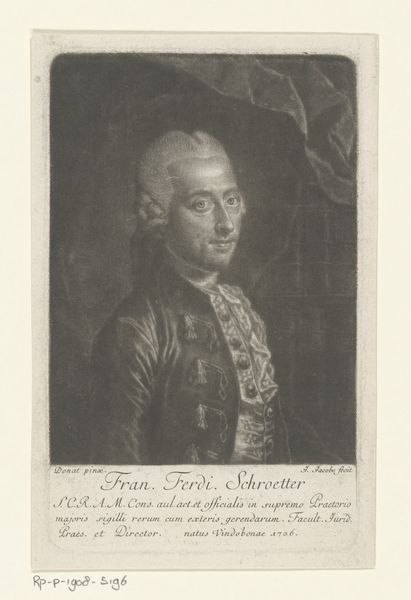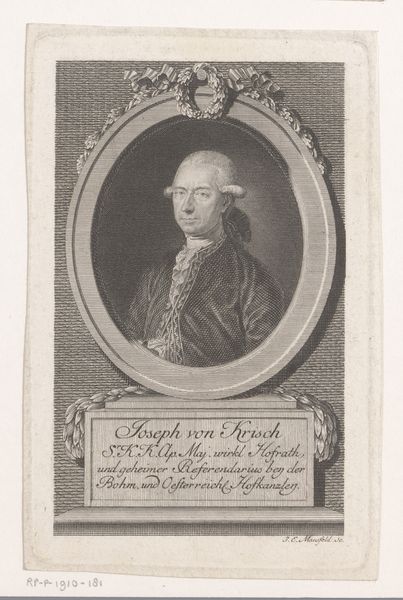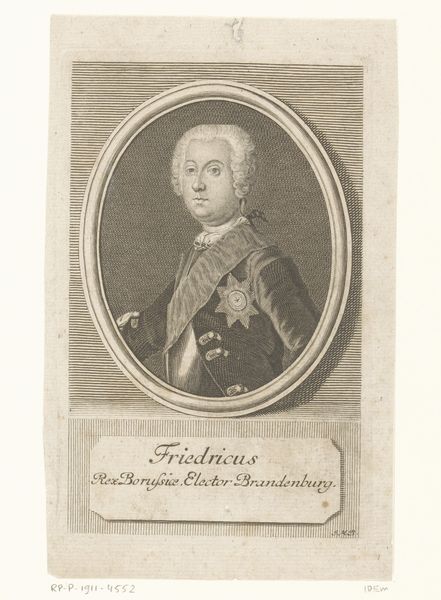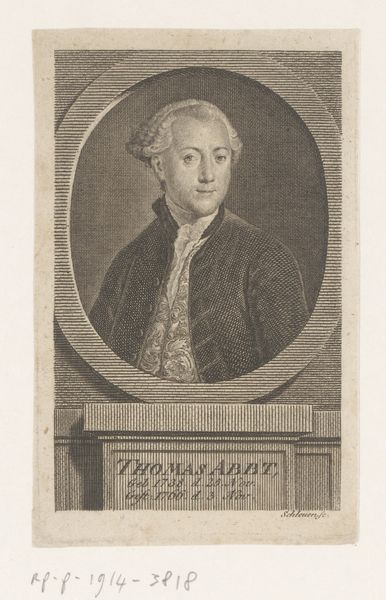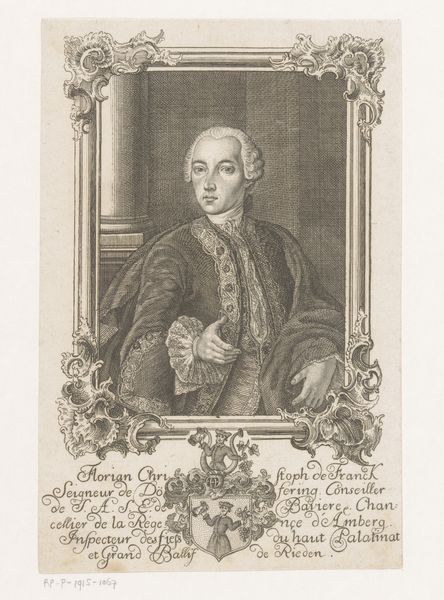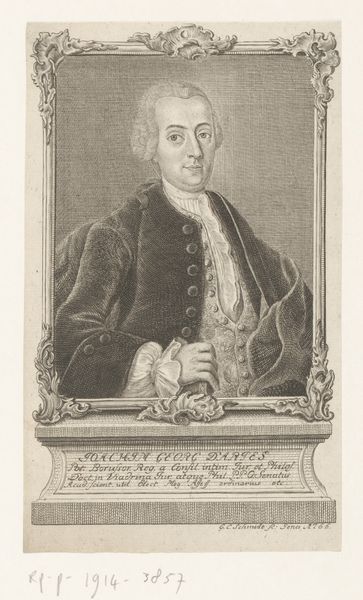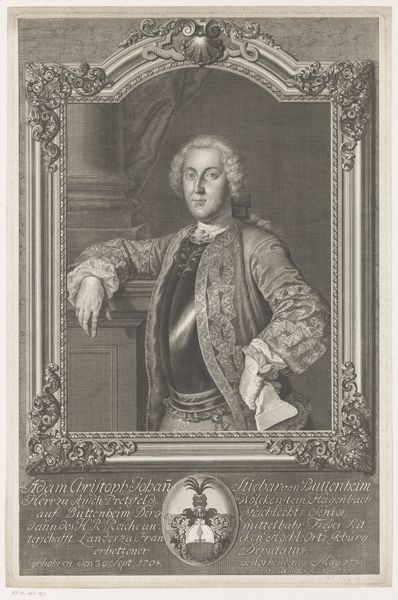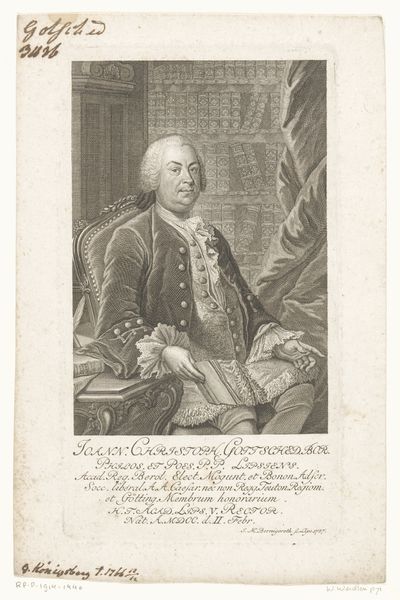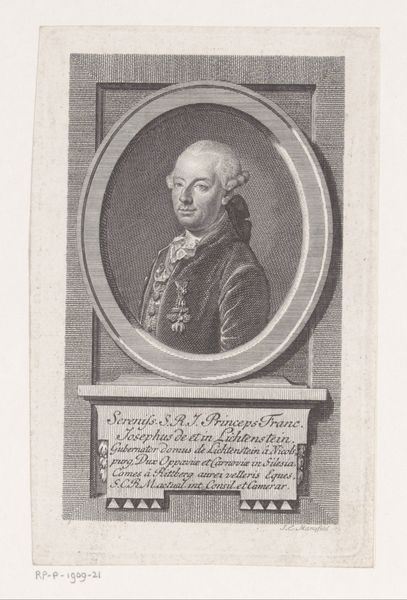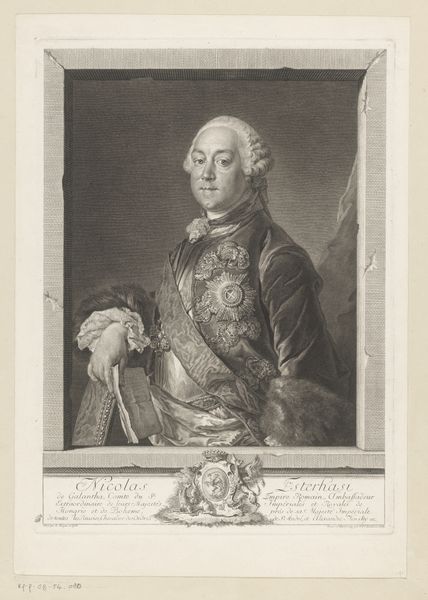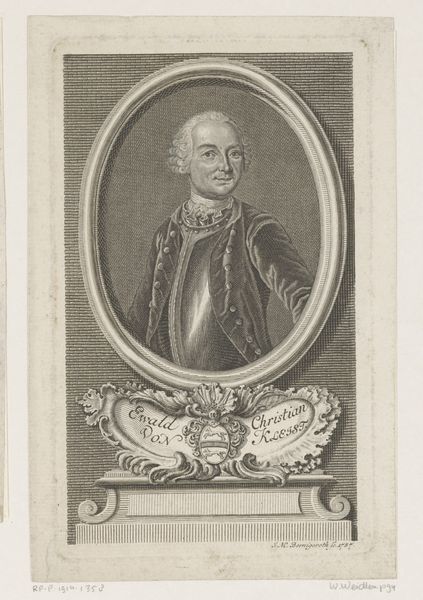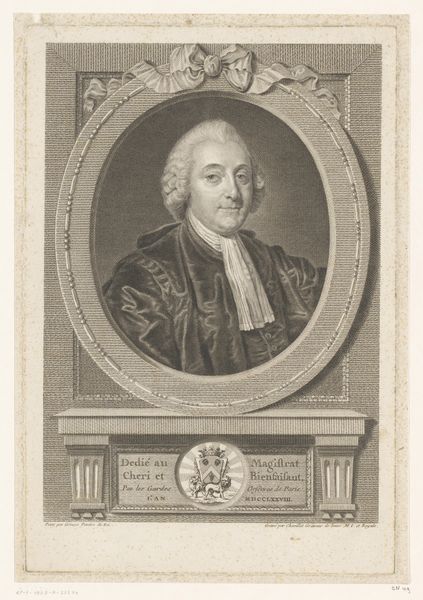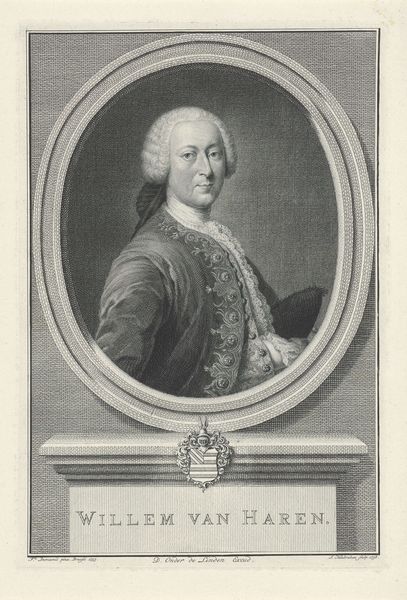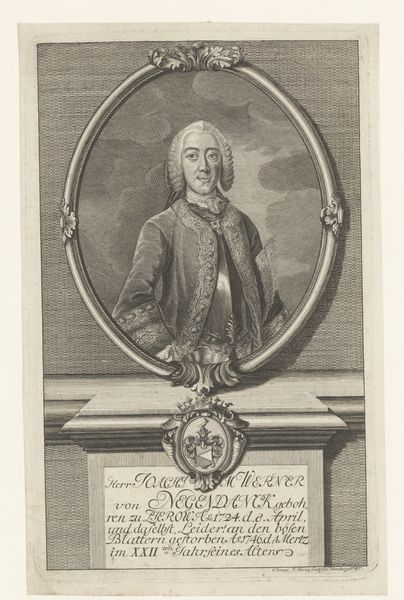
Portret van Joseph Friedrich von Saksen-Hildburghausen 1712 - 1769
0:00
0:00
engraving
#
portrait
#
baroque
#
engraving
Dimensions: height 148 mm, width 90 mm
Copyright: Rijks Museum: Open Domain
Curator: We’re standing before a portrait engraving depicting Joseph Friedrich von Saksen-Hildburghausen, created sometime between 1712 and 1769, and the piece is held here at the Rijksmuseum. The artist behind this work is Christian Fritzsch. Editor: Immediately, the man's steely gaze catches you, doesn't it? Despite being an engraving, a print, there's a certain weighty formality – an almost stifling atmosphere. It speaks of power, certainly, but perhaps also of constraint. Curator: That formality is very characteristic of Baroque portraiture, with its emphasis on portraying status and grandeur. Consider the elaborate armor, the powdered wig, the text beneath that carefully lists Joseph Friedrich's titles – all working to project an image of authority sanctioned by divine right. Editor: But looking beyond the surface, I can't help but wonder about the context of this work. It's one thing to see the image of power, but where was power really seated? I mean, did this person’s portrait serve to reinforce, or even attempt to legitimize, existing hierarchies? Curator: It would definitely operate within a culture where lineage was power, these portraits served to connect generations, solidifying a family's claim to privilege and, therefore, dominance. Also, given the turbulent political landscape of 18th-century Europe, such displays of authority were undoubtedly aimed at quelling dissent and consolidating support. Editor: True. And the use of engraving is interesting, right? Prints had a wide circulation. So the intent was to broadcast this message beyond the walls of a castle or a palace, so to speak? I am reminded that representations matter—images such as these have had a very real impact in the maintenance of class structure through ideology. Curator: Absolutely. And thinking of our current cultural moment, perhaps it can serve as a valuable exercise in iconoclasm, helping to examine power with skeptical scrutiny. Editor: A crucial thing, considering what’s at stake when authority goes unquestioned. Now I will examine 18th century history with greater interest!
Comments
No comments
Be the first to comment and join the conversation on the ultimate creative platform.
